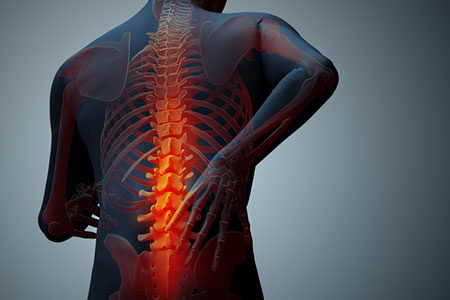
Ankylosing Spondylitis
Ankylosing spondylitis is an inflammatory disease of the spine and the sacroiliac joints located at the base of the low back. It can affect people of all age groups, including children. It is generally 2-3 times more common in men than in women. It is the main cause of back pain in young adults and adolescent. When this disease affects children, it is referred to as Juvenile Ankylosing Spondylitis. The most common age for the start of Ankylosing spondylitis symptoms is during 20 to 30 years of age and it can also occur in other body parts, most commonly in eyes.
If you are also suffering from the same then consult ankylosing spondylitis specialists doctors for treatment.
Symptoms
Early signs and symptoms include lower back or hips pain and stiffness, especially during early in the morning and after a prolonged period of inactivity. Also, it is very common in Ankylosing Spondylitis patients suffering from neck pain, as well as pain between breastbone and rib cartilage, shoulder joints, and fatigue.
Symptoms may worsen, improve or stop at irregular periods. The most commonly affected areas are; the spine and pelvic joint, low back, and vertebrae along with the areas where tendons and ligaments are attached to bones, mainly in the spine, or along the back of heel.
Cause
Ankylosing spondylitis does not have any specific known cause. But few clinical studies confirm that genetic factor HLA-B27 seems to be involved in enhancing the risk of causing ankylosing spondylitis.
Complications
In severe cases, new bone formation happens due to the body’s attempt to heal the gap between vertebrae and eventually, sections of vertebrae are fused together causing the joint stiffness and restricted function. To avoid any complication in future, better you get treatment as early as possible. You can also find best doctor for ankylosing spondylitis treatment in Ludhiana.
Diagnosis and Treatment
Diagnosis of ankylosing spondylitis is performed to evaluate the patient’s symptoms such as
- A physical examination helps to demonstrate signs of inflammation and decreased the range of motion of joints
- X-ray helps to find abnormalities of the spine
- Blood tests help to identify presence of the genetic marker HLA-B27
Urinalysis may also be performed to find associated complications of the kidney as well as to exclude symptoms of kidney problems that may also cause back pain and behaves like Ankylosing Spondylitis.
Although there is no cure for ankylosing spondylitis, still a progression of the disease can be controlled and minimized effectively with the treatments.
The main goal of Ankylosing spondylitis treatment in Ludhiana, resides in relieving joint pain, stiffness, prevent or delay complications and spinal deformity. Also, a proper Ankylosing spondylitis treatment needs to be started as soon as possible to prevent the irreversible damage to the joints.
Medications
The most common medications use to treat symptoms and complications of Ankylosing Spondylitis include:
- Nonsteroidal anti-inflammatory drugs (NSAIDs) such as naproxen (Naprosyn) and indomethacin (Indocin) are prescribed for relieving joint, pain, inflammation and stiffness. Excessive use of these medications may cause gastrointestinal bleeding.
- In case NSAIDs aren’t helpful, then a biologic medication such as tumor necrosis factor (TNF) blocker or an interleukin 17 (IL-17) inhibitor can be prescribed to reduce pain and stiffness of tender or swollen joints.
Other Therapy
Physical therapy also plays an important role to provide a number of benefits right from the pain relief to improved joint strength and flexibility. Here, a physical therapist can advise specific exercises as per the patient’s respective needs.
Surgery
Most often patients with ankylosing spondylitis don’t require a surgery. But in severe cases, doctors might recommend a surgery, especially when patient’s hip joint is damaged and needs to be replaced.


